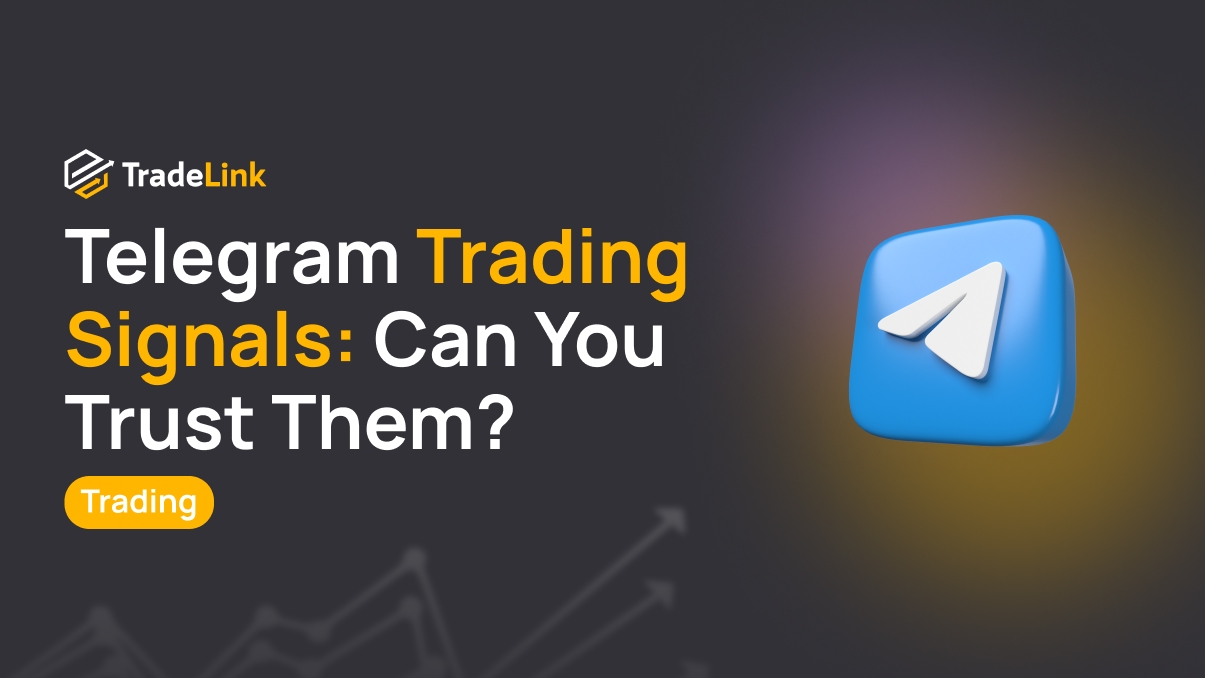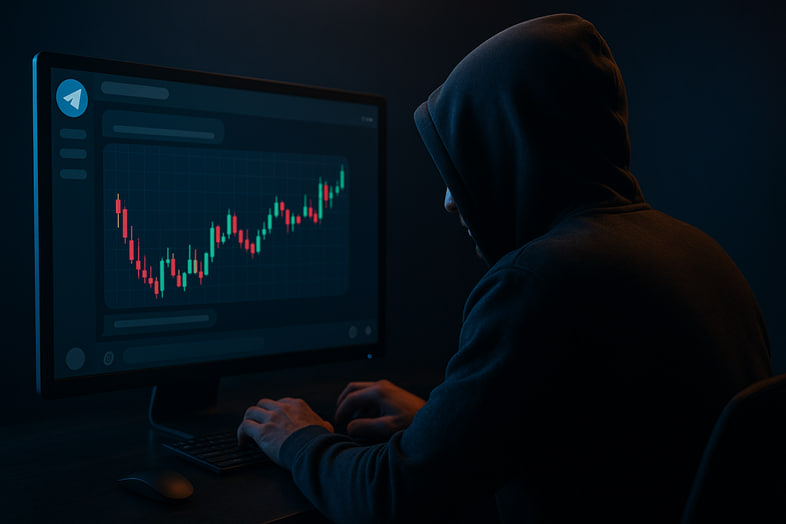Telegram Trading Signals: Can You Trust Them?

Contents
- Introduction
- Why People Turn to Telegram Channels for Signals
- What Are Signals from Telegram Channels
- Why Trading Signals in Telegram Channels Are Often Scams
- Conclusion
Introduction
Today, the internet is full of resources promising to help with trading and investing. One of the most popular among them is Telegram channels. Many people turn to these channels for quick answers and easy money. Some are seeking cryptocurrency buying advice, while others are looking for stock tips. It all seems simple: subscribe, receive a signal, place a trade, and pocket the profit. But is it that easy?
Why People Turn to Telegram Channels for Signals
Primarily, it’s the desire to make quick money. Beginners often lack an understanding of how the market works and struggle to make decisions independently. Telegram channels seem like an easy solution: everything is already outlined — where to enter, where to exit. Additionally, these channels create the impression that experienced traders are behind them. People want to save time and achieve results with minimal effort. This is precisely what draws many to signal groups in messengers.
What Are Signals from Telegram Channels

Definition of Signals
Signals are ready-made suggestions on when to buy or sell an asset. They usually indicate the entry point, profit targets, and stop-loss levels. Signals can relate to buying Bitcoin, stocks, or even betting on sports. Essentially, the person simply replicates the actions proposed by the signal provider.
How Telegram Signal Channels Work
Channels operate in different ways. Some are paid, offering access only to subscribers, while others are public and free. Some administrators claim to use technical analysis, while others claim to have insider information. However, verifying any of this is nearly impossible. Typically, the subscriber just receives a message with instructions and decides whether to follow them.
Variety of Signals
Signals can be given for anything that can be bought or sold. The most common are for cryptocurrencies, stocks, and futures. However, signals for sports betting, forex, and even NFTs also exist. Specialised channels specialise in various markets: some focus on long-term investments, while others focus on quick trades. But the core idea remains the same — to show entry and exit points.
Why Trading Signals in Telegram Channels Are Often Scams

No Accountability for Results
Signal authors bear no responsibility for subscribers’ losses. If a trade results in a loss, the channel simply continues to provide new recommendations without acknowledging the mistake. No one compensates for the losses or bears any legal responsibility for inaccurate advice. The authors always win because their income depends not on the quality of the signals, but on the number of subscribers they have.
False Promises of Easy Profits
These channels often advertise with promises of quick and effortless earnings. They create the illusion that success in trading is available to everyone without effort or knowledge. Common phrases used in scam channel ads include: “We have developed a strategy that renders technical analysis obsolete, “Our unique strategy has been tested hundreds of times and works flawlessly,” and “You no longer need technical analysis — just follow our trades.”
In reality, the market is complex, and even experienced traders suffer losses. These phrases are intended for those seeking quick results.
Fake Results
Channels frequently post screenshots of supposedly successful trades. Many of these are fabricated. In reality, results can be edited using graphic tools, while old losing signals are simply deleted.
Another common trick is posting results from demo accounts, presenting them as real trades.
This creates the illusion of high success rates, which has little to do with reality.
Anonymous Authors
Most authors hide their identities. They do not reveal their faces, disclose their real names, or share their qualifications. Anonymity makes fraud easier: if a subscriber gets scammed, it is nearly impossible to track down or hold the perpetrator accountable.
Nowadays, scammers often hire an actor to become the face of the channel. This creates a false sense of trust, giving the impression that the person has nothing to hide. In reality, a large team usually operates behind the scenes, and the “trader” seen in videos often has no real trading experience.
True professionals work openly, are not afraid of scrutiny, and support their claims with publicly verifiable trade portfolios and data.
Aggressive Upselling of Paid Subscriptions
At first, a channel may offer a few successful signals for free. Then comes the push to pay for access to a “private group” or “insider trades.” Once payment is made, the quality of signals often drops sharply, or access is blocked entirely. Sometimes scammers simply disappear with the collected money and create a new channel under a different name.
Lack of Education and Explanations

Signal channels rarely educate subscribers about market analysis. Instead, they simply send commands: “Buy,” “Sell,” “Hold.” Without understanding the reasoning behind actions, trading becomes little more than a form of gambling.
If any education is offered, it typically promotes a new, unique strategy or trading tool, often for an additional fee. This could be a trading bot promising flawless signals or a simple strategy based on a few indicators, supposedly yielding success in 99% of trades.
Emotional Manipulation
Scammers skillfully use emotions like fear of missing out (FOMO) and greed. They often write things like: “Last chance today”, “The signal will work within an hour”, and “If you miss it, you’ll regret it”.
Such pressure clouds judgment and prompts people to make impulsive, risky decisions that often result in losses.
Risks to Your Deposit
Trading on financial markets without prior experience almost always results in losses. Even a good signal can result in a loss if the trader doesn’t know how to manage risks, set stop-losses, or avoid overexposing their account.
Telegram signal channels often fail to teach proper trading practices, which can lead to significant capital loss.
Summary of Common Signs of Scam Channels:
- Screenshots showing huge profits without proof.
- No explanations for trade decisions.
- Urgent pressure tactics, such as “only today” or “last chance”.
- Charging fees for access to so-called “secret information”.
- Promises of extremely high win rates or guaranteed profits.
- Complete lack of transparency.
Conclusion
Trading signal channels in Telegram are almost always created to profit from their subscribers. They promise easy money, hide their mistakes, and manipulate emotions. Blindly following such signals without understanding the market usually leads to losses.
There are only two reliable paths in the market: learn to analyse the market yourself or use the strategies of proven traders through transparent platforms.
On our platform, TradeLink, you can study and replicate top traders’ strategies, analyse real-time statistics, trade histories, and performance results.
All trades and profits are fully transparent and available for verification, while your funds remain entirely under your control.
Respect your money. Make decisions with a clear head and choose only those tools where transparency and control come first.